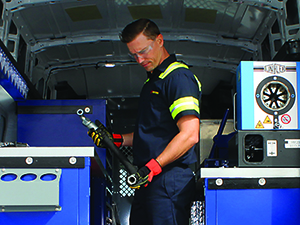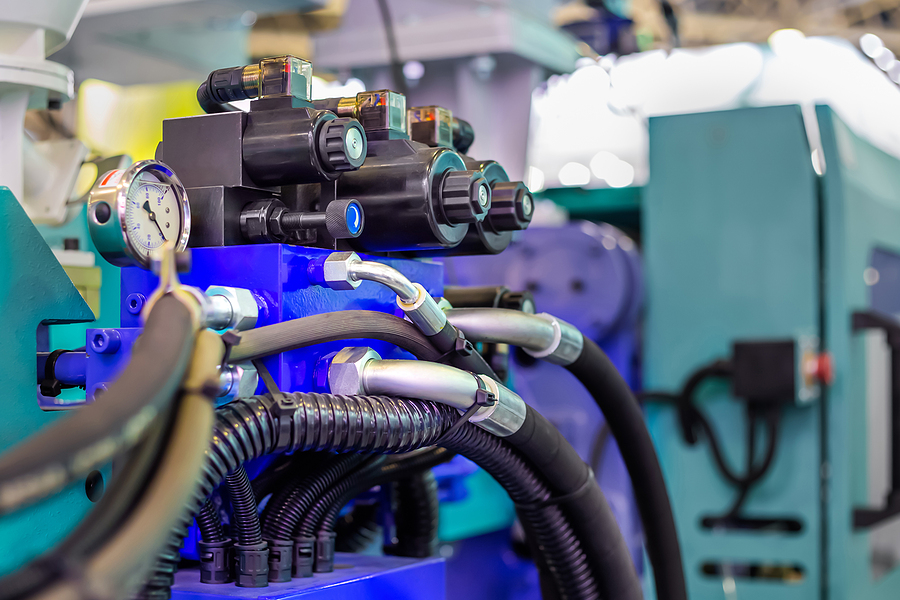High-quality hydraulic hoses, essential for ensuring the efficiency, reliability, and safety of hydraulic systems, are specifically engineered to withstand extreme pressures, temperatures, and environmental conditions. Constructed from flexible rubber or wire and featuring a multi-layered structure, hydraulic hoses serve a critical role in directing the flow of hydraulic fluid between parts within the hydraulic systems they support. They are used in diverse applications ranging from construction equipment to industrial machinery, emphasizing the importance of quality standards and certifications in ensuring their longevity and reliability.
Understanding High-Temperature Environments
Understanding the impact of temperature on hydraulic hoses is crucial for ensuring their longevity and performance in various applications.
Temperature Sensitivity
- Low Temperatures: Exposure to extreme cold can make hydraulic hoses stiff, leading to potential cracking and rupturing as they warm up. Cold conditions can also cause hydraulic fluid to thicken, reducing system efficiency.
- High Temperatures: High temperatures can lead to a severe reduction in the viscosity of hydraulic fluids and lubricants, causing permanent deterioration. This can result in material expansion and contraction within the hose, leading to fluid pressure issues, burst hoses, and system failures.
Optimal Temperature Range
- Most hydraulic hoses operate safely within a temperature range of -40°F (-40°C) to +212°F (+100°C), with specialty hoses extending this range to -40°F (-40°C) to +300°F (+149°C). Exceeding these limits can significantly shorten hose lifespan.
Preventative Measures:
- Selection of the right hydraulic hose, fluid, and additives, along with protective measures like wraps or sleeves, is essential. Regular monitoring for signs of deterioration due to temperature changes helps maintain system integrity. For extreme conditions, insulating measures such as heat shields or electric heating systems can be employed to maintain optimal fluid flow and prevent damage.
These considerations underscore why the selection of high-temperature hydraulic hose designed to withstand specific environmental conditions is critical for the reliability and safety of hydraulic systems.
Materials and Construction of High-Temperature Hoses

Materials Used:
- Synthetic Rubber: Offers durability, flexibility, and resistance to high temperatures and abrasions. Notably used in environments not involving petroleum-based oils.
- Thermoplastics: Known for being lightweight and resistant to chemicals and abrasion, though less durable in high-temperature fluid applications compared to synthetic rubber, but some do have some especially low-temperature characteristics.
- Teflon (PTFE): Stands out for its high-temperature resistance up to 450°F and chemical resistance, making it ideal for harsh chemical environments.
Construction Layers:
- Inner Tube: Flexible to allow smooth fluid transfer, made from materials like synthetic rubber or Teflon for specific fluid compatibility.
- Reinforcement Layer: Either braided or spiral wire, adding strength and resistance to high pressure.
- Outer Layer: Offers protection against weather and abrasion, ensuring the hose’s durability in various environments.
Understanding why high-temperature hydraulic hoses are a critical component and why quality standards matter is essential. Hose construction, materials, and performance directly influence application-specific considerations, ensuring it meets the required quality standards and certifications. This careful selection and manufacturing precision underline the hose’s critical performance characteristics, tailored to withstand specific operational needs without compromising longevity and reliability.
Manufacturing Precision and Materials
High-temperature hydraulic hoses are meticulously engineered to endure the rigors of extreme pressures, temperatures, and environmental conditions. This resilience is not by chance but the result of precise manufacturing processes and the selection of premium materials. Material Selection and Hose Assembly:
- STAMPED Method: To select the ideal hose assembly for specific applications, the STAMPED acronym guides the process, considering Size, Temperature, Application, Material, Pressure, Ends of couplings, and Delivery. This method ensures that the hose precisely meets the customer’s requirements.
- Material Varieties: The choice of materials is critical, from synthetic rubber, known for its durability and high-temperature resistance, to environmentally friendly ‘green’ hydraulic fluids. The hose ID, number of reinforcement layers, and construction are meticulously identified to match the application’s demands.
Couplings:
- There are two main types: permanent and field-attachable. Permanent couplings, requiring specialized crimping equipment, offer a robust solution for high-pressure applications. In contrast, field-attachable (reusable) couplings provide flexibility for on-site assembly with basic tools.
This detailed approach to manufacturing precision and materials ensures that high-temperature hydraulic hoses meet and exceed quality standards and certifications, guaranteeing longevity and reliability in demanding environments.
Quality Standards and Certifications
In hydraulic systems, the quality and reliability of high-temperature hydraulic hoses are required. These hoses must adhere to stringent standards and certifications to ensure optimal performance, safety, and durability. Key standards include:
- SAE J517: This standard is pivotal in the U.S. It outlines general, dimensional, and performance specifications for hydraulic hoses. It establishes minimum pressure ratings based on hose inside diameters, ensuring hoses can withstand the pressures they’re subjected to.
Manufacturer certifications also play a crucial role in ensuring hose quality
- PIRTEK Hoses: For high-temperature applications, PIRTEK offers a 100R2AT hose, which is approved by both MSHA (Mine Safety and Health Administration, and SAE J1942 Coast Guard approval for marine applications. Rubber high-temperature-rated hydraulic hoses typically have a blue outer cover.
Selecting a hydraulic hose that meets these standards and certifications ensures not only the hose’s longevity and reliability but also the safety and efficiency of the hydraulic system it serves.
Critical Performance Characteristics
High-quality hydraulic hoses are indispensable in maintaining the efficiency and safety of hydraulic systems, especially when operating under high temperatures and pressures. Their critical performance characteristics are:
Safety and Efficiency:
- Pressure and Temperature Resistance: Capable of withstanding an average internal pressure of at least 3000 psi and temperatures between 200°F and 300°F.
- Protective Features: Designed with outer layers or coatings to resist abrasion, ozone, and weathering, thus preventing premature failure.
Selection and Application:
- Proper Hose Selection: Crucial for avoiding downtime and ensuring smooth operation. Factors to consider include the hose’s inside diameter (I.D.) for flow rate and pressure capacity, flexibility, abrasion resistance, and compatibility with specific fluids.
These characteristics highlight why high-temperature hydraulic hoses are critical components in hydraulic systems, underscoring the importance of quality standards, manufacturing precision, and material selection in ensuring their longevity, reliability, and performance in demanding environments.
Application-Specific Considerations
In addressing application-specific considerations for high-temperature hydraulic hoses, it’s paramount to factor in various operational and environmental conditions to ensure optimal performance and longevity. Here’s a detailed look at key considerations:
Hose Selection and Sizing
- Internal Diameter (I.D.): Ensure the hose I.D. is accurately sized for optimal flow velocity to prevent sluggish system performance or excessive pressure drops that can cause system damage and leaks.
- Temperature Considerations: Account for both media and ambient temperatures, selecting a hose whose temperature rating meets or exceeds the higher of the two.
- Media Compatibility: The hose must be compatible with the medium being conveyed. This includes the inner tube, cover, hose fittings, and o-rings.
Environmental and Operational Factors:
- Mechanical Loads and Routing: Consider equipment, environmental factors, mechanical loads, routing confinement, and the potential for abrasion.
- Pressure Requirements: Know the system working pressure, including any surge pressures or spikes. Select a hose with a maximum working pressure equal to or greater than the system’s maximum pressure and any transient peaks.
Maintenance and Inspection:
- Regular Monitoring: Frequent monitoring of hoses and fluids is essential for early detection of wear or damage.
- Preventive Measures: To prevent cracking, pay attention to the hose’s bend radius, check the temperature rating, ensure fluid compatibility, and verify proper assembly.
These guidelines underscore the importance of meticulous selection and maintenance practices in safeguarding hydraulic systems against the challenges posed by extreme temperatures, ensuring the reliability and efficiency of high-temperature hydraulic hoses in various industrial applications.
Conclusion



